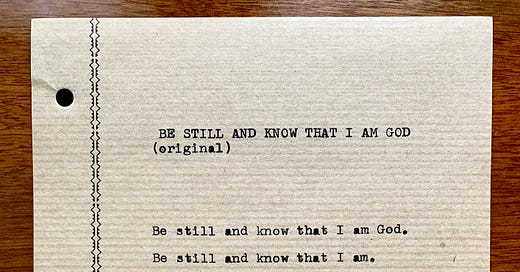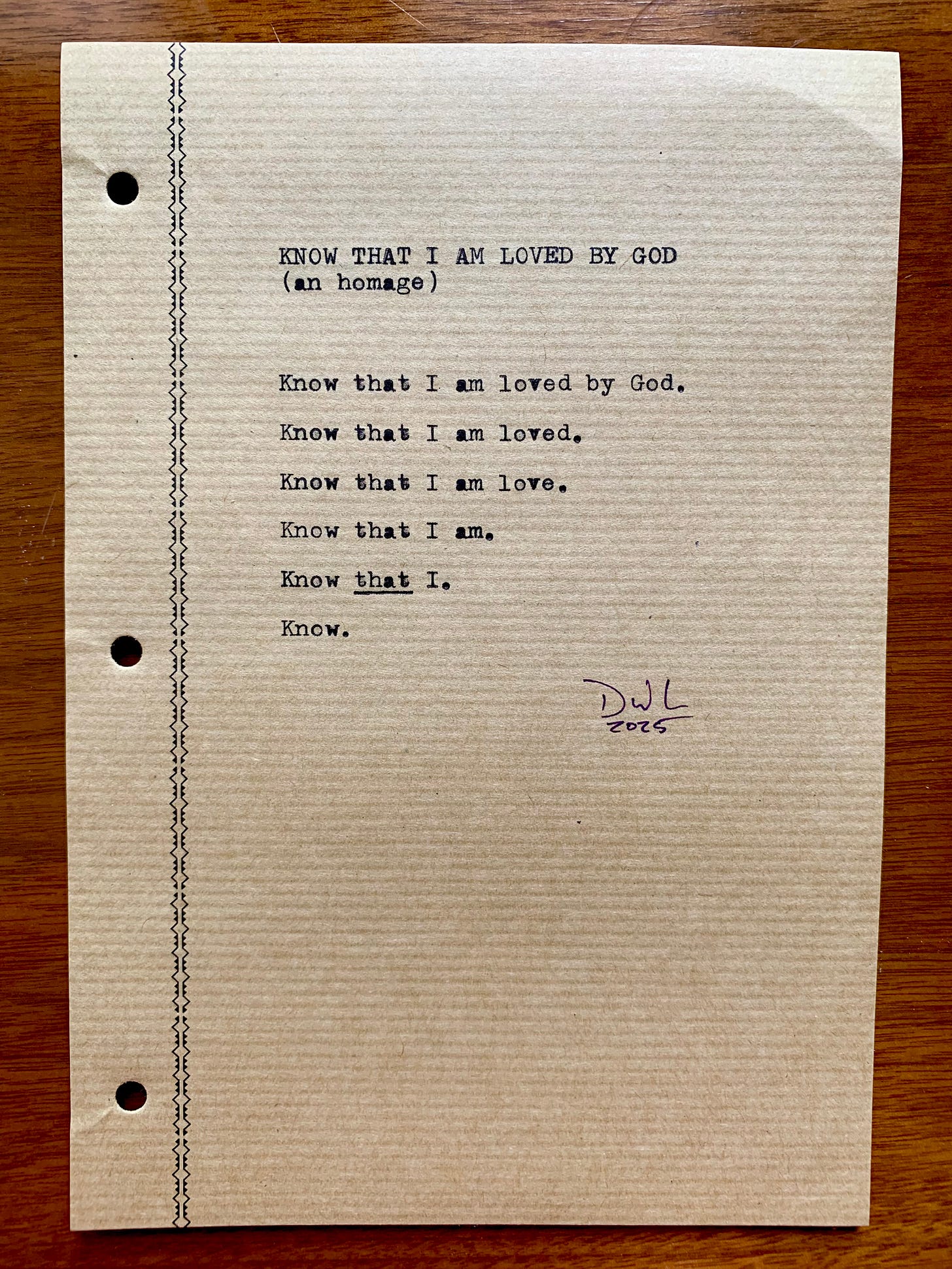In his landmark book, Everything Belongs, Richard Rohr introduces one of his preferred methods for entering a state of silence, of meditation or contemplation. Borrowed from Psalm 46:10, he first speaks aloud (or, when alone, thinks silently) the full line as shared in that psalm: “Be still and know that I am God.” He then offers a handful of deconstructions of the line, removing a word or two with each iteration and filling the spaces between them with pauses and mindful breathing. As shown in the written version above, each line of the deconstruction offers a different, deeper meaning.
If you’d like to see and hear Richard sharing this technique, skip to the 6min 29sec mark of this YouTube video, in which he leads livestream viewers into a silent sitting meditation.
A fan of clever wordplay almost as much as I’m a fanboy of Rohr, I love this sort of thing. In reflection/writing mode a few weeks ago, I was batting around the question of how someone can know that they’re loved and wrote some version of “How can I know that I am loved by God?” Staring at the words (as I often do) wondering where to go next, it struck me how that line might have similar deconstructability as Rohr’s version of “Be Still.” In that spirit, I offer my version below as a poetic homage:
Given the limited punctuation options of my 1940s Royal Aristocrat typewriter (thank you very much), I’ll offer brief context about the second-to-last line with “that” in underline: my intent is to invite the reader/speaker to experience the “I” as our true self, who we are in God, who we are before and without our ego and conditioned mind, the “face we had before we were born” (to paraphrase a Zen koan), who we are that never dies.






I love the inspiration and the newest version. I think I may even like the new version better. Know *that* I hits so hard.